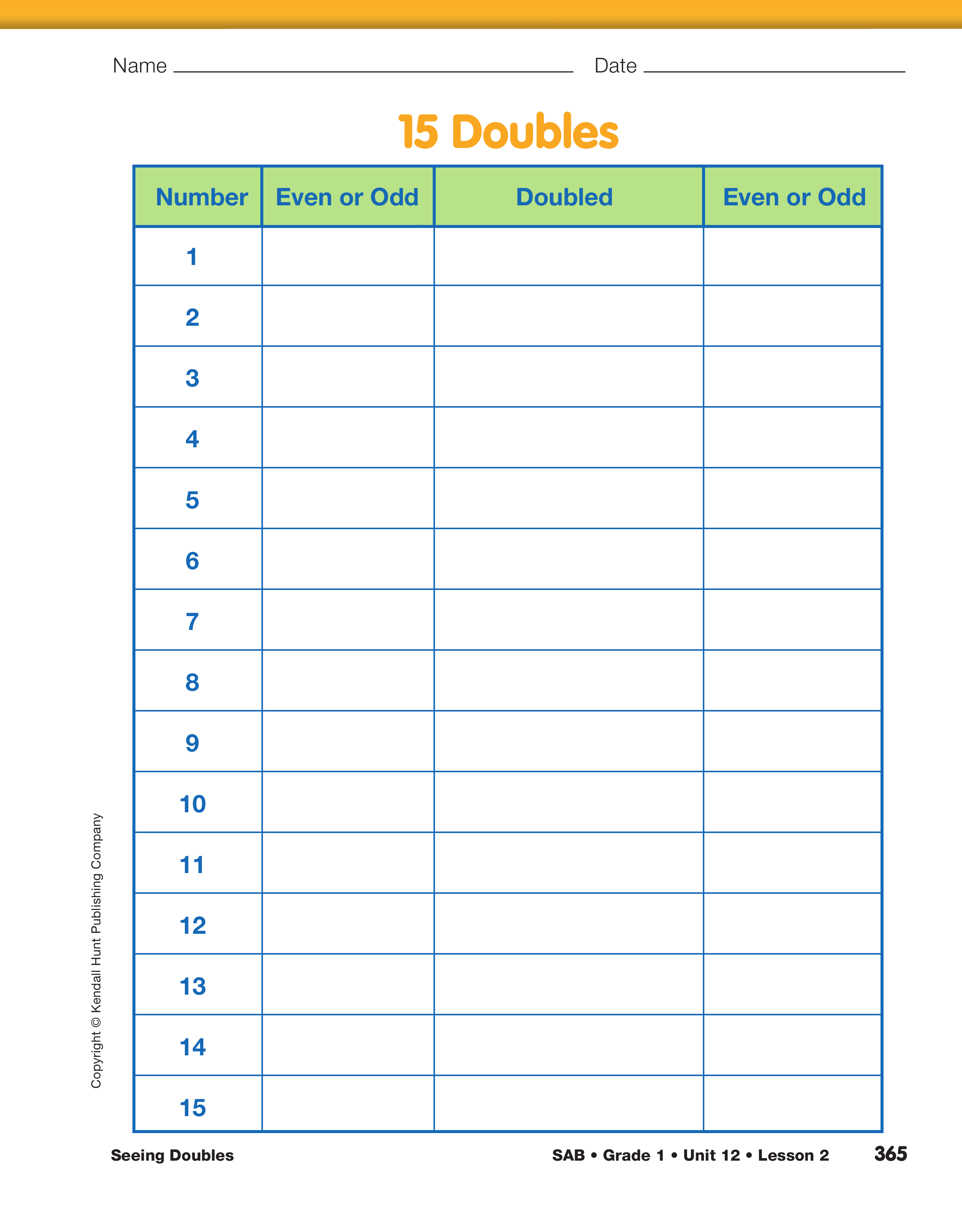Seeing Doubles
Est. Class Sessions: 1–2Developing the Lesson
Part 2: Doubles and Counting Numbers
Finding the Doubles Sort. Show a display of the 15 Doubles page from the Student Activity Book.
Start with the first line and ask students:
As you are asking the questions, write in the appropriate answers on the first line of the display of the data table.
Next move to the number 6 and ask the same questions. Ask students how they can find out the answers if they don't already know. Have a student demonstrate making pairs out of 6 cubes to tell whether it is even or odd. Record the result in the second column of the data table. Then ask a student to find the double of 6. Finally ask a student to use cube pairs again to determine whether 12 is even or odd. Have the student write the answers in the appropriate spaces on the display of the data table.
Before students begin to work on the rest of the numbers on the 15 Doubles page, ask them to first check to see if there are some doubles they might already know and to fill in those spaces. Have students work with a partner to complete the page, finding all the doubles through 15. They can use cubes, diagrams or any other strategy to determine even or odd and to find doubles. Remind them they can also refer to the folded doubles papers that have been posted on the "Doubles" board.
Describe Patterns in Doubles. When students finish, have them look at their papers to see if they see patterns, particularly in the columns. They should see the patterns listed below. If all the patterns are not mentioned, ask questions to bring them out.
- The counting numbers alternate between even and odd.
- The doubles are the numbers you get skip counting by twos.
- All the doubles are even, whether the original number was even or odd.
Assign the Doubles Board Homework Master to extend student thinking about doubles.













